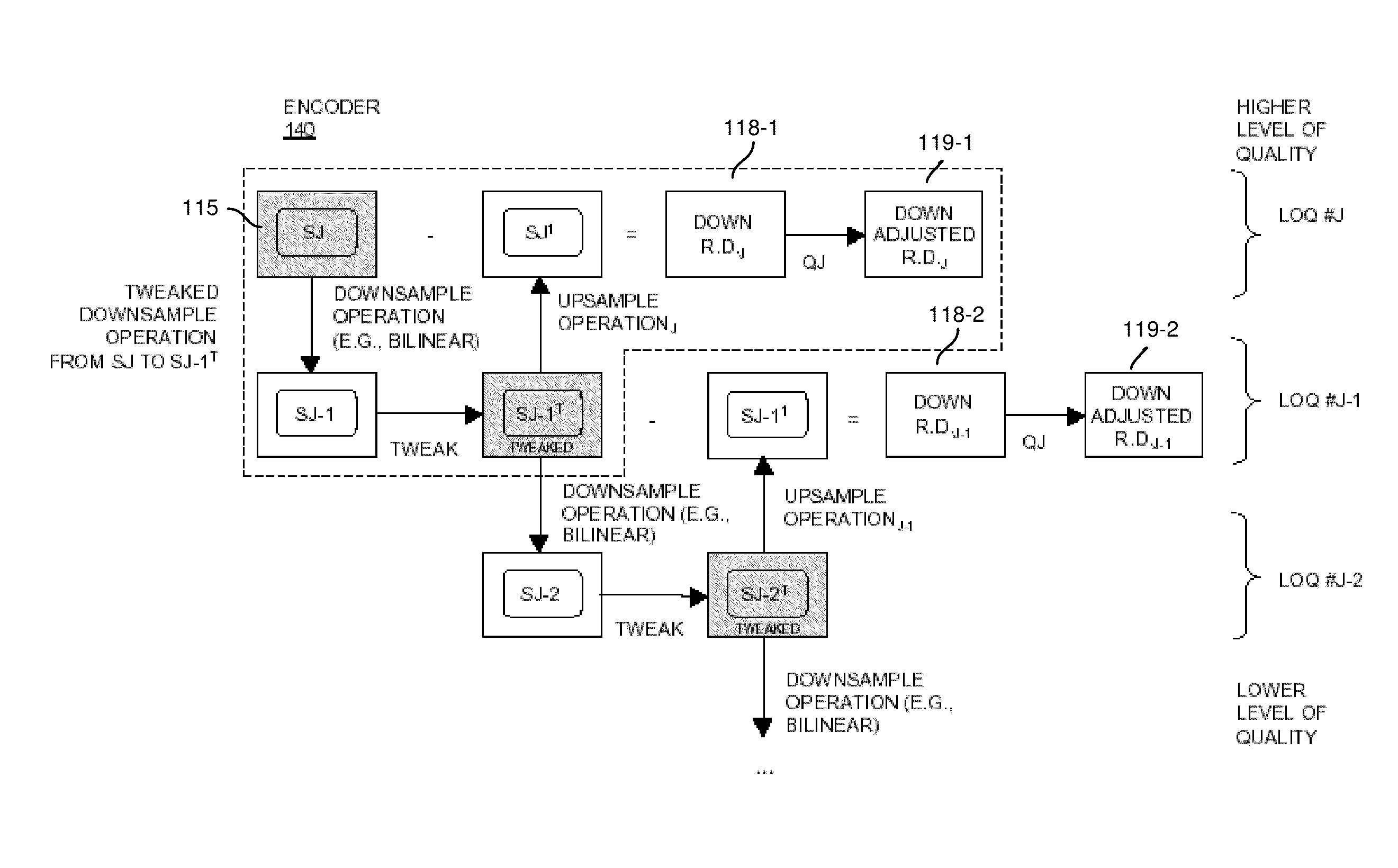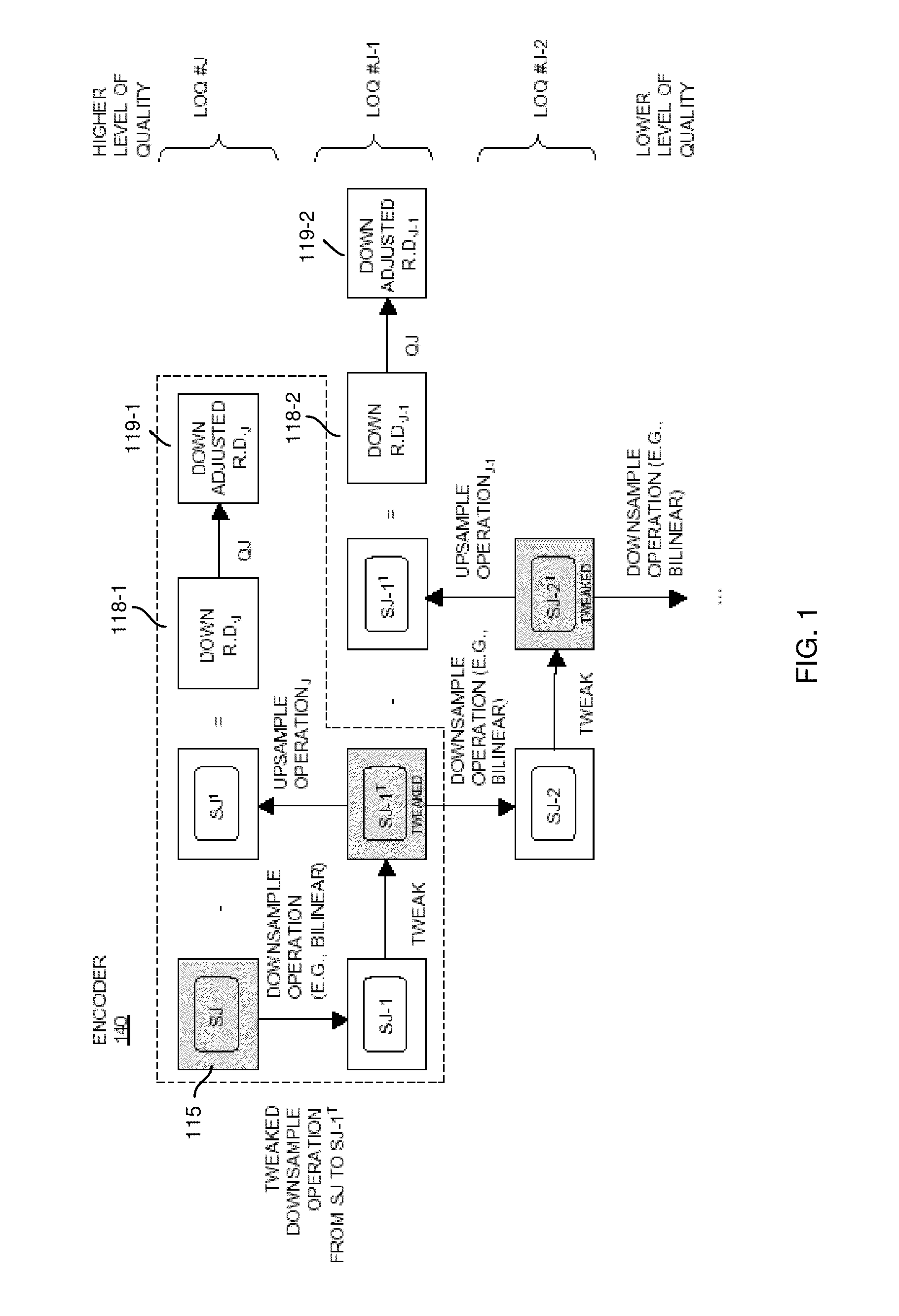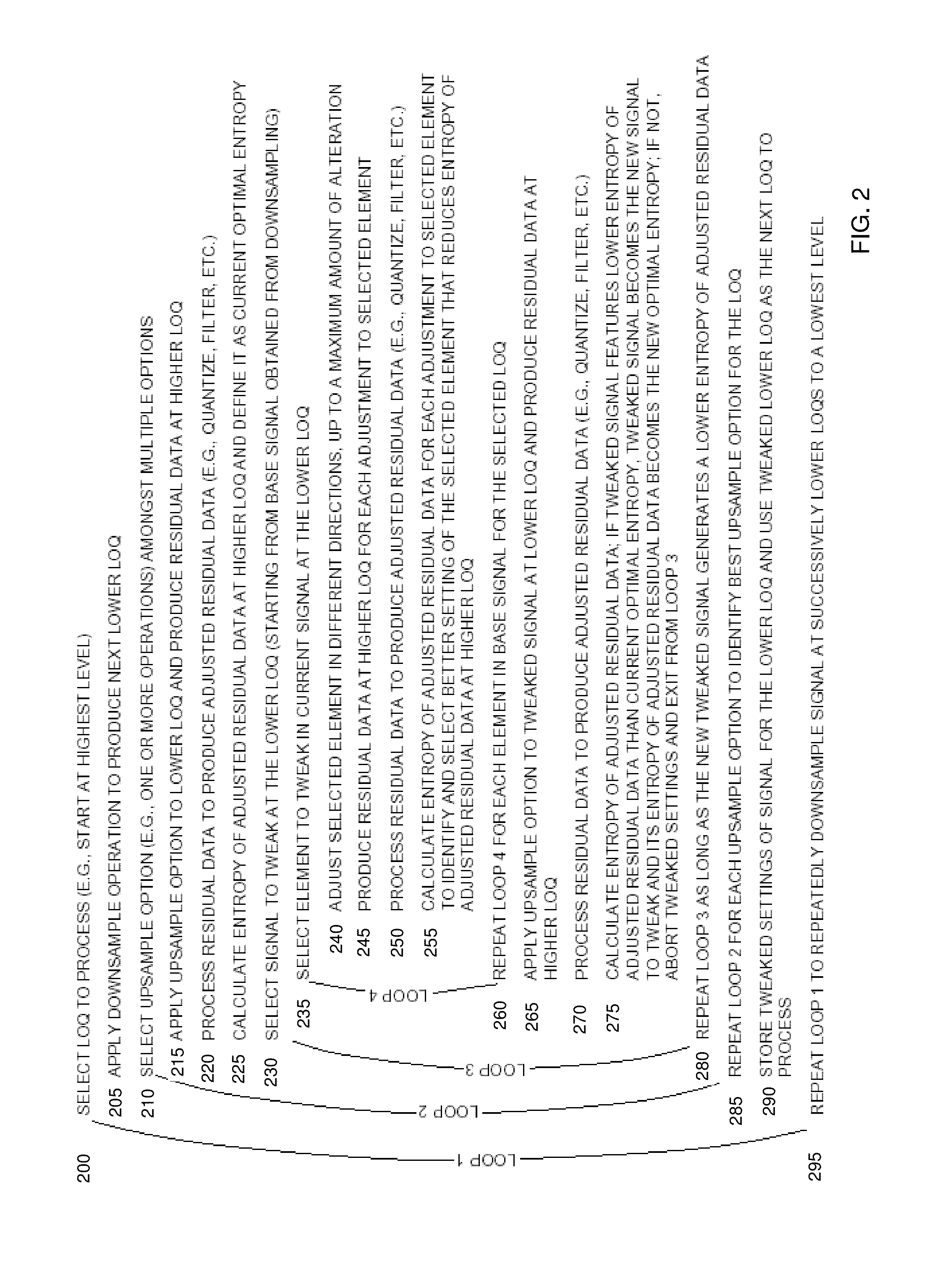Signal processing and tiered signal encoding
a signal and signal encoding technology, applied in the field of signal processing and tiered signal encoding, can solve the problems of large portion of available processing power going unused, structurally non-parallel mpeg (moving picture expert group) family codecs, unsuitable for parallel cpus applications, etc., and achieve the effect of increasing the entropy of residual data and reducing the associated entropy
- Summary
- Abstract
- Description
- Claims
- Application Information
AI Technical Summary
Benefits of technology
Problems solved by technology
Method used
Image
Examples
Embodiment Construction
[0055]According to one embodiment, an encoder receives a signal. The encoder utilizes one or more downsample operations to produce downsampled renditions of the signal (i.e., signal data) at successively lower levels of quality in the hierarchy. In a reverse direction, the encoder applies the one or more upsample operations to a downsampled rendition of the signal at a first level of quality to produce an upsampled rendition of the signal at a second level of quality in the hierarchy. The second level of quality is higher than the first level of quality. The one or more upsample operations and one or more downsample operations can be asymmetrical with respect to each other. That is, the function applied during downsampling can be different from the function applied when upsampling. The encoder produces residual data indicating a difference between the downsampled rendition of the signal at the second level of quality and the upsampled rendition of the signal at the second level of q...
PUM
 Login to View More
Login to View More Abstract
Description
Claims
Application Information
 Login to View More
Login to View More - R&D
- Intellectual Property
- Life Sciences
- Materials
- Tech Scout
- Unparalleled Data Quality
- Higher Quality Content
- 60% Fewer Hallucinations
Browse by: Latest US Patents, China's latest patents, Technical Efficacy Thesaurus, Application Domain, Technology Topic, Popular Technical Reports.
© 2025 PatSnap. All rights reserved.Legal|Privacy policy|Modern Slavery Act Transparency Statement|Sitemap|About US| Contact US: help@patsnap.com



